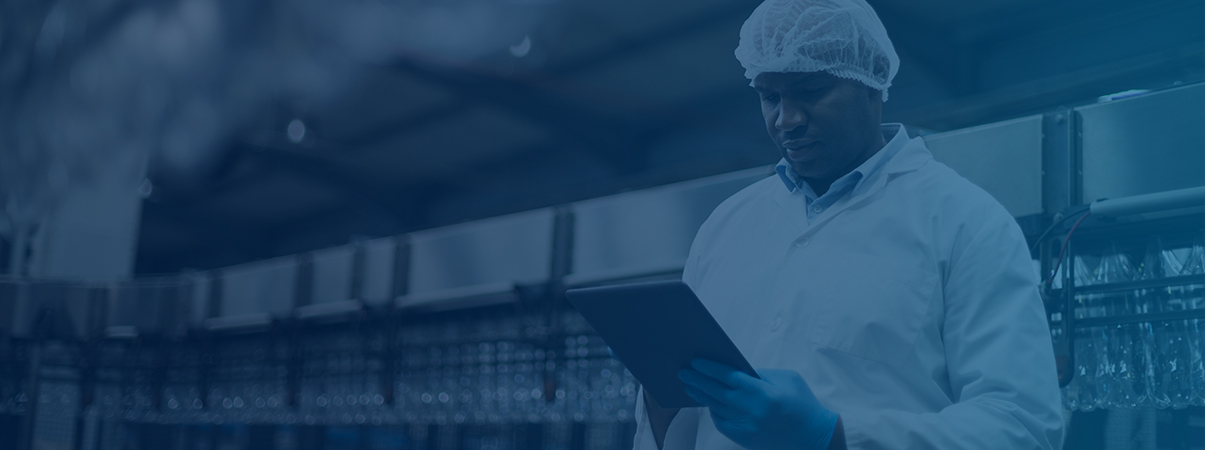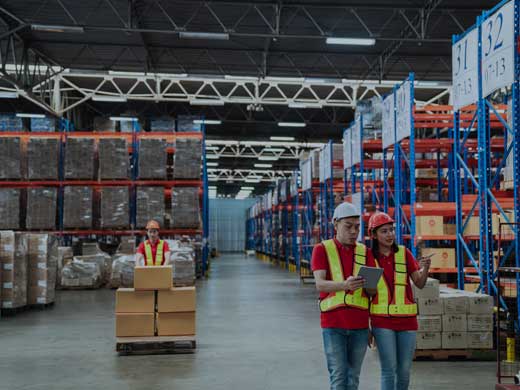When you’re shortlisting ERPs for your food processing business, what key features should you look for?
Your team, of course, is consulting your list of requirements. But remember, as a food processing business, you have special operational requirements. So you want to make sure your shortlisted ERPs have the particular features essential to supporting and simplifying growth in your industry.
Consequently, you should shy away from general-purpose ERP software designed for conventional manufacturing and processing.
An ERP that’s built with your food processing needs in mind will save you thousands of dollars in customizations as well as untold hours of labour as your team carries out the tasks specific to your industry.
So make sure your ERP has the following six indispensable features:
1. KPI dashboards and business intelligence to enhance your decision-making
2. Traceability management that facilitates tracking
3. Easy functionality for recall management and food safety certifications such as HACCP, SGF, and GFSI
4. Production management and master production schedules (MPS) to support manufacturing and forecasting
5. E-Commerce capabilities that deliver B2C convenience
6. Cloud-based ERP functionality that offers affordability and easier implementation and access
Here’s why these six features are indispensable.
To learn more about how to assess the ERP requirements of your food and beverage business, click on, "What ERP Assessment Approach Should Your Food and Beverage Business Use?”
1. KPI dashboards and business intelligence to enhance your decision-making
How can you counter the low-profit margins endemic to the food processing industry? With rigorous monitoring of your costs in real time.
ERP systems offer you a variety of options for staying on top of your margins every day. For example, your KPI dashboard can be self-customized to offer this information at a glance for any aspect of your business you want to focus on.
Or, in a few clicks, you can generate a dynamic analysis view of your production data. By drilling down into the data components of your analysis view, you can analyze what adjustments need to be proactively made.
Here are three other examples of how dashboards or business intelligence can help you proactively make business decisions that increase profitability.
Inventory levels
Before manufacturing starts, you want to be sure your inventory can support your production run. The right ERP provides real-time inventory levels almost instantly any time you need them. To help keep your inventory levels optimal, your ERP can notify you automatically when stock levels reach the minimum-maximum thresholds you’ve set beforehand. Furthermore, your ERP’s analytics can provide reports on seasonal inventory trends to help your purchasing team make data-supported decisions.
Production status and forecasting models
With full visibility into your inventory, sales, and production, you can plan with precision what raw materials you need to purchase, which equipment will be in use, and the staff you’ll need to carry out the production. As a result of this precision, you benefit from just-in-time production, which allows you to produce more efficiently, more quickly, with just the right amount of staff.
Furthermore, your ERP’s forecasting capacity enables you to explore various production scenarios as your production variables evolve.
Breakdowns of hidden costs and food waste
Some ERPs, like Fidelio, enable you to surface what are typically overlooked or hidden costs. For example:
- Grocery chain stocking charges
- Commissions payable to sales representatives
- Additional discounts on payments made by grocery chains
- End-of-season discounts
By rigorously accounting for these costs, you’ll have a truer real-time view of your profitability.
Another advantage of ERP systems is that they promote a disciplined approach to business procedures and protocols. As a result, food processing companies working with ERPs have more efficient business procedures, which reduce food waste.
2. Traceability management that facilitates tracking
As a food processor, your product has an impact on the lives of many people. To protect both the health of these consumers and your reputation, you need to easily maintain your chain of traceability for all the raw materials in your production process.
With the right ERP, you have effortless 360-degree visibility on all your inventory at all times. Thus, through the ERP’s traceability function, you can monitor the movement of all ingredients at all times. Starting from the moment they arrive at your door, you can track them to whatever location they’re stored in, through the process of becoming part of a recipe and leaving your premises as a new product with a new lot number, to their final destination at a customer.
Furthermore, you can track inventory expiry dates, and isolate particular components quickly and precisely should there be a need to quarantine or recall these items.
3. Easy functionality for recall management and food safety certifications such as HACCP, SGF, and GFSI
Nobody ever wants to receive notice of an emergency health and safety recall, but if you do, you want to carry out the recall as efficiently as possible, within the period defined by the auditor. With the right ERP, you can quickly identify:
- The sourcing of the questionable components
- Which of your products include these components
- What other products these questionable components have been in contact with
- The destination of the questionable products.
The right ERP enables you to source all this information in a few clicks. Using Fidelio, for example, you merely have to enter the lot number of the ingredient received, and the ERP system tracks:
- Everything that was made with the ingredient
- All the ingredients that came out of the inventory
- The customers to whom the finished product was delivered
- The destinations of the products and the quantities involved.
4. Production management and master production schedules (MPS) to support manufacturing and forecasting

As a result of the ERP’s integrated real-time view of inventory, sales, and purchasing, you benefit from a master production schedule (MPS): an overview of all the material, labour, and equipment you’ll need to carry out your production. Since the MPS reflects real-time data, it adjusts the quantities to be produced each day based on actual demand and ingredient availability. That precision supports greater efficiency and better planning.
The ERP’s forecasting capacity also enables you to plan for the particular components you’ll need well in advance, so you can be proactive about having the right stock levels. Let’s say packaging elements are in short supply. Because the ERP system can plan and estimate your packaging needs, you can source with more foresight and thus reduce the risk of production slowdowns due to material shortages.
5. e-Commerce capabilities that deliver B2C convenience
Your B2B buyers’ expectations about their online shopping experiences keep rising. That’s because every day in their lives as B2C shoppers they are served by some of the world’s most forward-thinking online merchants. As a result, B2B buyers working with your business can’t help but have high expectations about your e-commerce capability.
With the right ERP system, your e-commerce functionality enables you to offer online customers the following:
- 24/7 self-service that improves the customer experience
- Year-round access to your catalog, online invoice payment, delivery tracking, and return requests
- Views of their order history to ensure they order the right quantities based on seasonality
- Advance notice of your promotions so they can potentially stock up on items when it will be advantageous
- Opportunities to upsell and cross-sell.
With this e-commerce functionality, you reduce the load on your customer service team so they can devote themselves to other projects that add value to your bottom line.
6. Cloud-based ERP functionality that offers affordability and easier implementation and access
Small and medium-sized businesses have benefited greatly from the evolution of ERP software based in the cloud. System implementation is relatively easy compared to on-premise ERP solutions and your small business benefits from all the advantages of an ERP with little upfront investment or IT infrastructure.
Furthermore, you don’t have to worry about maintenance, updates, security, and data back-up and recovery because the ERP developers look after all of that.
What’s more, these Software-as-a-Service (SasS) systems are easily accessible to businesses via any Internet browser with the payment of a monthly subscription fee. So no matter where your team is located, they can work with the ERP system. That easy flexibility helps support greater productivity and job flexibility in your business.
To learn more about the fundamentals of a cloud ERP system click on, “Cloud ERP: What It Is, How It Works, and Why Businesses Choose It to Elevate Performance.”
Because your food processing business has special operational requirements, your shortlist of ERPs needs to include software systems that address those specific needs. Fidelio is such an ERP.
Or contact us today!





